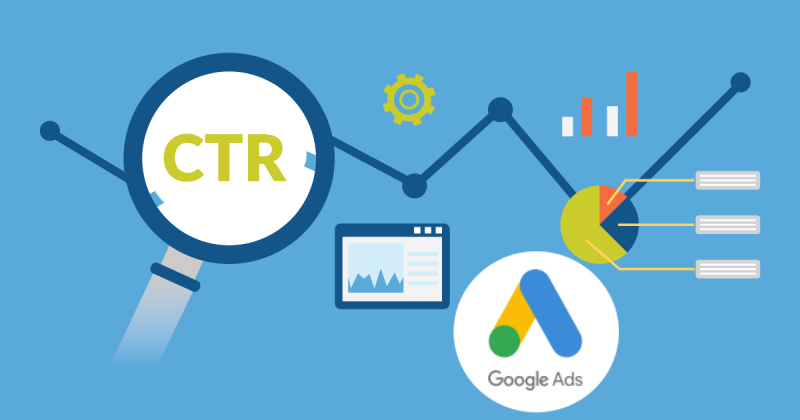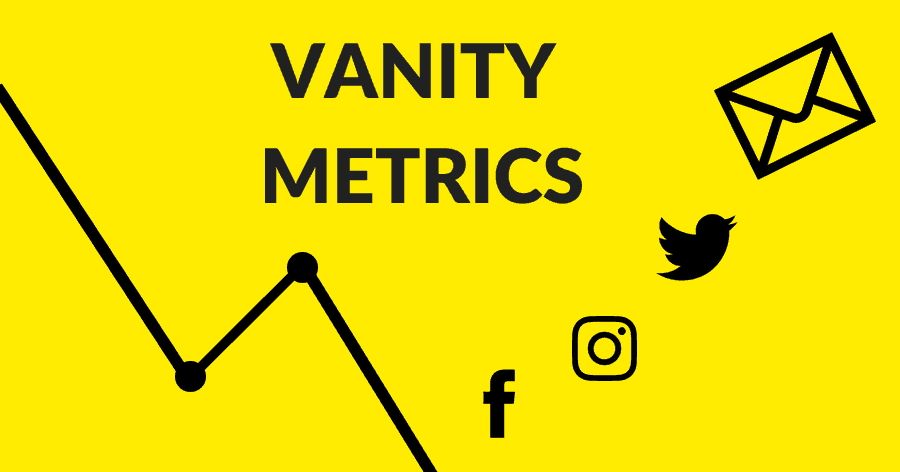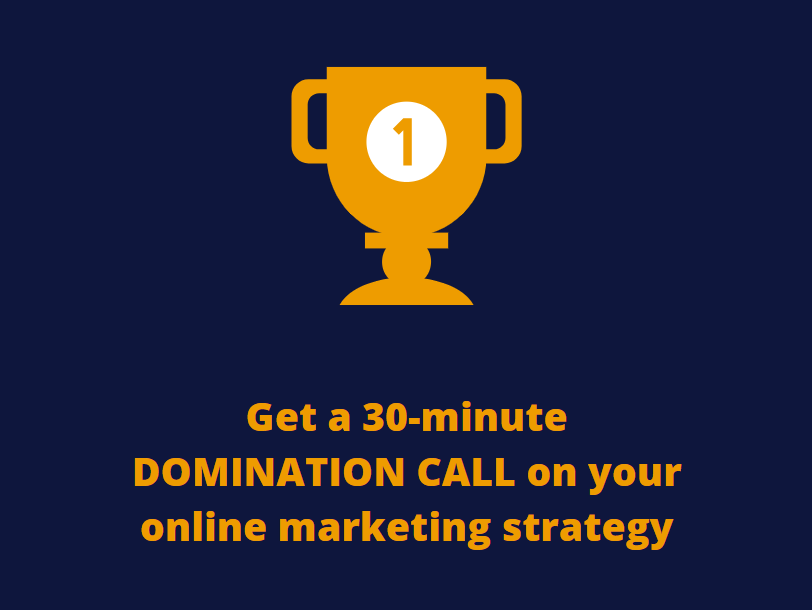In the world of marketing, there are many ways to pretend you’re doing well. You tend to interact with a barrage of statistical data on regular basis, and it can all be very confusing. Without the right understanding, a lot of managers tend to focus on the figures that are easy to understand and give them a sense of accomplishment, regardless of whether they drive business results. First of all: what are vanity metrics?
The definition differs based on the industry to which an organization belongs.
In broad terms, anything you measure that doesn’t directly relate to customer acquisition, customer retention, user experience, revenue, or conversions are vanity metrics – it only serves to make you look/feel good. These stats cannot help one make an educated decision without putting them in a larger context. Vanity metrics give very little insight into the process of achieving them or what they mean for the business.
1. Number of Social Media Followers

In our experience, these vanity metrics are given a lot more importance by lots of companies than actually matters. Besides providing proof that your community is growing, your follower count doesn’t serve much more purpose.
There are several reasons why this one metric means a lot less than most folks believe. Firstly, you have to understand that not everyone following you is your customer. Some can’t afford to, while others can’t buy from you due to a multitude of Some follow you because they’re job hunting, others to promote their own services, some simply want you to follow them back, while your competitor is following you to do some strategic stalking.
Then there’s the Almighty Algorithm. Beyond the content that goes on your Page, you get very little say on the number of eyeballs it reaches organically. This is all heavily dependent on and monitored by the platform’s algorithm.
Most social media platforms nowadays have algorithms that decide how your content gets served depending on the strength of your account compared to everyone else’s, the amount of content on the platform, your account’s engagement rate, and a multitude of other factors. The fact of the matter is that for most social media platforms (TikTok and LinkedIn being the current exceptions), less than 5% of your followers get served with your content organically.
Take Instagram for example there’s been an immense furor over Instagram’s declining organic reach, where accounts with hundreds of thousands of followers are getting half the amount of exposure that they were a few years ago. While the early Instagrammers enjoyed the advantage of immense organic reach because the platform was relatively smaller, such reach is impossible now that the platform gets millions of hourly uploads.
Such astronomical reach can only be observed on less mature platforms such as LinkedIn and TikTok currently, but it does not last forever. And before you complain about how unfair this whole thing is, just remember that the platforms are free to use, and are controlled by the entities that run them.
But there’s a great workaround for this: targeted ads.
With advertising, you get to define the makeup of the exact type of customer that you’re looking for, and Facebook, Instagram, Snapchat, or Twitter will serve your content to them at a higher priority than most other accounts because you’re paying them to do so. Just look out for these money-wasting traps when running social media ads.
2. Total Website Traffic

How does a business profit from gaining more web traffic? Unless you are selling ads on your website (none of our clients do), total web traffic means very little to your bottom line. Just like the total number of inquiries that a business receives, Web traffic only makes a business impact when it is tied to a bigger goal. Like with the number of followers, not all website visitors translate to customers. As a matter of fact, most websites have a conversion rate between 2-5% depending on the industry.
Web traffic makes better sense when used as a function of your website’s Conversion Rate. By tying Total Web Traffic to Conversion Rate, you are able to understand how your marketing efforts tie to the results that you get. For example, if through testing you are able to increase the website’s conversion rate, focusing on increasing web traffic then becomes a solid plan.
3. Click-Through Rate (CTR)

Click-Through Rate (CTR) measures the percentage of clicks an ad receives compared to the number of times it was viewed. Alone, it seems like a perfectly explainable metric – especially when you see a drastic improvement or are doing better than the industry average. But it requires a little more prodding: is the traffic from the ads with increased CTR taking your intended actions and converting? or do they leave after 6 seconds? That’s worth investigating.
A simple way to do this is using UTM tracking on all links in ad campaigns to give more information on the traffic. Then you can compare the CTR of your ads with the data in Google Analytics, factoring in other metrics like Average Session Duration and Conversion Rate.
4. Number of Likes on a Post

A lot of folks ask, “My post did so well, why isn’t it making me as much money as it should?”
The number of likes on a social media post only means that x number of people derived value from that post. Period.
The same dynamics we discussed on the Number of Followers also apply here.
The most important thing to remember with social media content is that you need to be constantly creating. Put in place a system where you’re always churning out content no matter the circumstances and watch the learning unfold.
A lot of creators get demoralized when a post they spent so long work on gets little engagement, so they stop creating. On the other extreme, a lot of creators freeze after creating a post that does extremely well.
However, there’s something to be gleaned here.
A post that performs well organically tells you that it has potential for more. You can create more posts that play on the same angle or replicate that formula to produce content that gets massive engagement.
Here’s how we use this principle in practice: our current content model is quite simple: we post for our clients daily and learn from the performance of the posts. By testing 30-40 pieces of content per month, we’re able to unearth 3 pieces that we can later repurpose as ads.
5. Newsletter subscribers

Let’s be frank. Being an internet user, you’ve probably signed up (more than once) for various newsletters from organizations that you thought interesting. But do you usually read all their emails?
As your follower count, your newsletter subscribers are the folks who are interested in your brand – or whom you cajoled into sharing their email address in return for something they perceived valuable. But most people don’t read all their emails. Email open rates have been dropping since the ’90s, meaning that only a small portion of your email subscribers actually open your email, and an even smaller portion of your audience takes the action that you wish them to from the email.
Instead, focus on the metrics that measure your intended actions. Your email newsletter open rate is one such metric – think of ways how to improve it, such as using catchier email titles.
Your open rate can also boost your email Click Through Rate (CTR), that is, the number of clicks you get from your emails to the offers that you present in the email body. CTR can be improved by using more appealing language in your emails, creating customized offers for your email newsletter audience, and more – we’ll devote an entire article to this topic soon.
In conclusion
Numbers don’t lie, but some matter less than others.
When factoring a metric in your decision-making for, consider whether it only makes you feel/look good, and to what extent it ties to your business goals.



2 replies on “5 Vanity Metrics You Should Pay Less Attention & What to Track Instead”
[…] it’s not always about tracking vanity metrics so you’ll feel good about having huge traffic or a large following. It’s also about ensuring […]
[…] services is that they’ve seen their competition doing so, or read articles about why every business needs social media marketing. Digging deeper, we can then understand the problem that they’re trying to solve – a […]